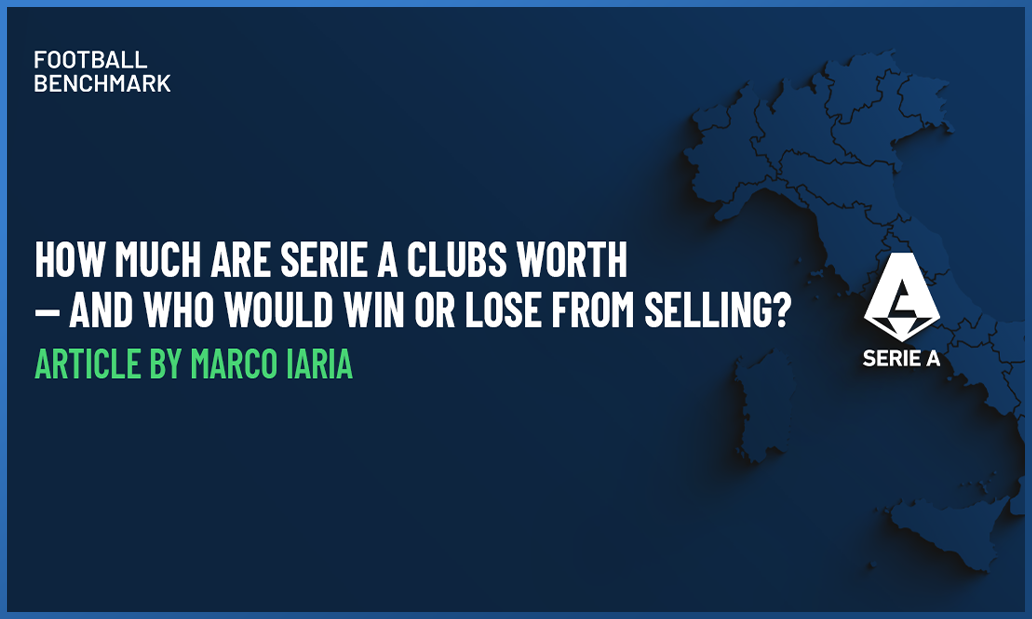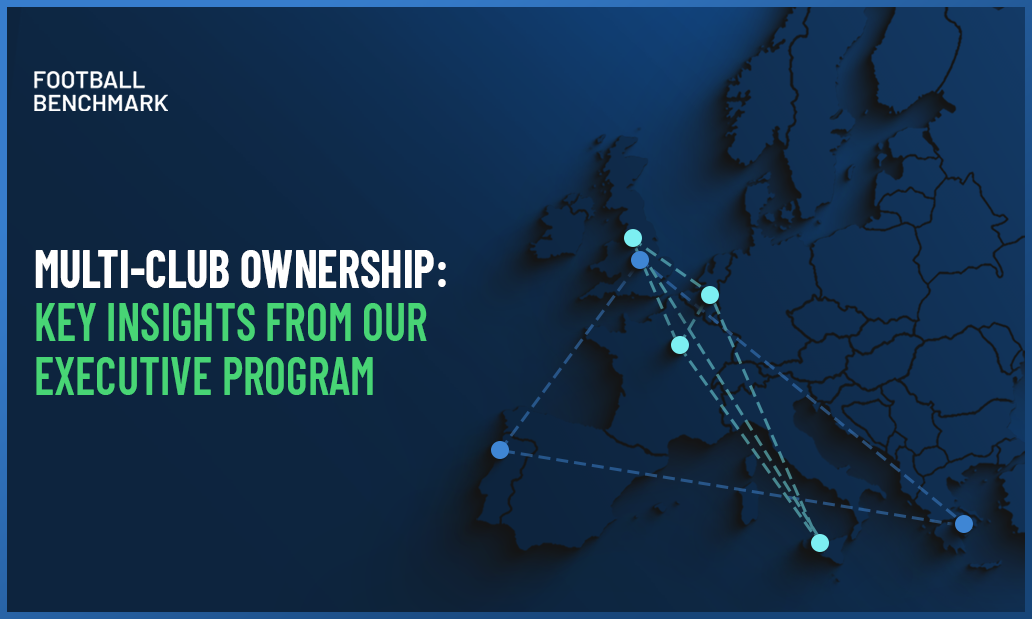
Special contribution by Marco Iaria | La Gazzetta dello Sport
This article, adapted from an original investigation published in La Gazzetta dello Sport, is presented as a special contribution for this newsletter. It provides a data-driven analysis of Serie A club ownership, utilising valuation insights from Football Benchmark to examine the relationship between enterprise value and owner investment.
By comparing club enterprise values with the actual capital invested by their respective owners, the analysis seeks to answer: Who would profit — and who would lose — if their club were sold today?
To be clear, the intention is not to speculate on imminent sales or ownership changes. While some clubs, such as Udinese, are known to be in discussions (owner Gianpaolo Pozzo has publicly acknowledged talks, reportedly with U.S.-based Guggenheim Partners), others remain firmly in the hands of their current owners. Rather, the piece provides a forward-looking view of the Serie A club acquisition market — one that has become increasingly active and open to foreign capital in recent years.
To assess potential profits or losses for hypothetical sellers, this analysis compares each club’s enterprise value, taken from Football Benchmark’s latest estimates. Once the enterprise value is set, the actual amount paid to the seller is derived by subtracting financial (and sometimes operational) debt, yielding the equity value. From a seller's perspective, there is a profit if the price exceeds the total investment in the asset; otherwise, it results in a loss.
Dan Friedkin is currently Serie A’s biggest investor. Since acquiring Roma in 2020, the American businessman has invested nearly €958 million, covering both share acquisition and losses.
Football Benchmark estimates Roma’s enterprise value at €665 million (based on 2022/23 and 2023/24 financials). With net financial debt at €432 million (including €298 million in shareholder loans expected to be converted to equity), the resulting equity value is €134 million, or roughly €530 million net. That’s almost half of Friedkin’s total investment.
Unless Roma returns to the UEFA Champions League and completes the long-awaited Pietralata stadium (projected cost: €1 billion), recouping this investment looks unlikely.
In 2022, Gerry Cardinale’s RedBird acquired Milan from Elliott for an enterprise value of €1.2 billion, with minimal debt, resulting in an equity value of around €1.15 billion. The club has posted profits in two straight seasons and might do so again in 2024/25, although missing European football next season presents a financial challenge.
Cardinale raised €600 million in capital and took out a €550 million vendor loan, of which €170 million has been repaid. Add a further €55 million invested in the club, and RedBird’s exposure totals €825 million. However, to sell, RedBird would need to repay Elliott the remaining loan — €489 million plus 7–8% annual interest until July 2028 — taking total long-term exposure past €1.4 billion (excluding future equity contributions).
Football Benchmark currently values Milan’s EV at €1.8 billion — or €1.75 billion net of debt — pointing to a potential capital gain. Cardinale, though, is banking on further growth through a new stadium project, a view shared by Oaktree.
Last year, Oaktree took control of Inter after Zhang defaulted, seizing full ownership. Their exposure mainly concerns the 2021 loan — €390 million including interest — plus a €52 million recapitalisation, for a total of €442 million.
With Football Benchmark valuing Inter at €1.7 billion and net debt estimated at €350 million, the equity value stands at €1.35 billion. A significant capital gain is already on the cards, although Oaktree is focused on creating value in the medium to long term. Inter is expected to close the 2024/25 season with record revenues and its first profit. If financial balance is maintained and the San Siro project progresses, Oaktree will hit the jackpot.
Although Exor is technically an investment fund, it considers Juventus a family asset and has no intention of selling. Since the club’s listing on the stock exchange in 2001, the majority shareholder has invested €730 million, including a recent €15 million contribution towards a planned capital increase of up to €110 million.
Football Benchmark values Juventus at €1.65 billion, including €300 million in net financial debt. Its market capitalisation is lower (€1.25 billion), but that figure does not reflect either the real value of the club or the current climate in a booming football M&A market. Exor owns 65.4% of the club.
Lazio, also listed on the stock exchange, is 67% controlled by Claudio Lotito via Lazio Events. He paid €30 million to acquire control in 2004 and, in over twenty years, has injected capital only once — €6 million in 2021/22 to comply with FIGC liquidity rules.
Between 2004/05 and 2023/24, Lazio generated €60 million in cumulative profits. However, the club’s transfer market activity is currently blocked due to breaches of three parameters. While the wage bill is in line with revenues, debt and liquidity index violations could have been avoided with fresh equity from the owner.
Lazio’s enterprise value stands at €560 million; subtracting €50 million in debt leaves €500 million. Lotito would register a gain in the event of a sale, although he has always maintained his desire to pass the club on to his son.
Aurelio De Laurentiis would achieve an even greater return if he were to sell Napoli. He acquired the club in 2004, post-bankruptcy, with a €32 million bank loan later repaid by the club itself. He injected €16 million during the first two years and nothing since. Over time, Napoli has generated €141 million in profits, all reinvested in the club’s growth. Today, Napoli is worth €1.1 billion and has a positive net financial position.
In 2022, Atalanta’s majority stake was sold by the Percassi family to a consortium led by Stephen Pagliuca, in a deal valuing the club at €450 million. The Americans’ total outlay was €294 million. They now own 62%, with the Percassi family retaining 38%. Atalanta’s enterprise value is now €570 million — with neutral net debt — up from three years ago.
Fiorentina is valued at €500 million and is debt-free, thanks to constant capital injections from Rocco Commisso. Since acquiring the club in 2019, he has invested €474 million, including €122 million for the Viola Park training centre, as well as through Mediacom sponsorships. He could exit without a loss.
Joey Saputo’s situation at Bologna is less clear. Since 2014, he has invested €293 million in the club. The estimated enterprise value ranges between €250 million and €300 million, with around €10 million in net debt.


